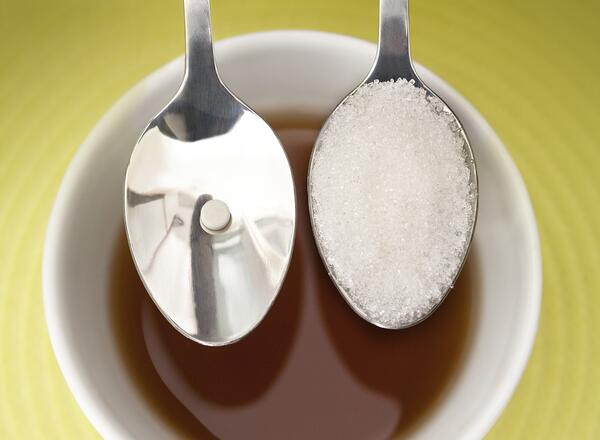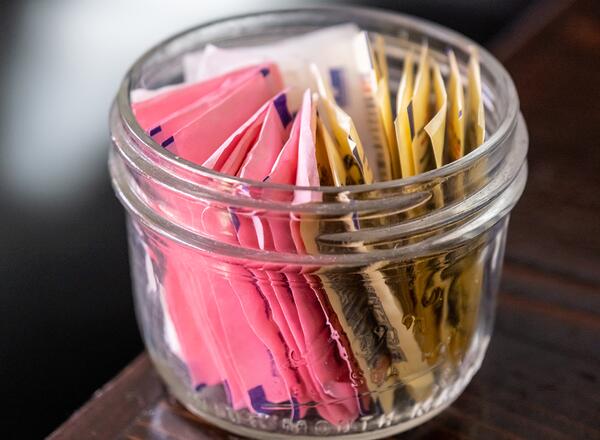
Artificial or non-nutritive sweeteners are sweeteners that do not provide any carbohydrate or calories per serving. There are five main non-nutritive sweeteners:
Acesulfame K (potassium)
Sold as Sweet One® or Sunett, it has less of an aftertaste than saccharin and it is more stable when heated than aspartame. This sweetener, however, it is not available in all markets. The Acceptable Daily Intake is 15 mg/kg body weight/day, according to the FDA.
Aspartame
Sold as NutraSweet and Equal, has little aftertaste but becomes unstable at high temperatures so it is not appropriate for baking or cooking. Advantame is a sweetener mad from aspartame and isovanillin. The Acceptable Daily Intake is 50 mg/kg body weight/day, according to the FDA.
Neotame
Although it has been approved for use by the FDA in 2002, it is not available for individual use. The Acceptable Daily Intake is 0.3 mg/kg body weight/day, according to the FDA.
Saccharin
Sold as Sweet n Low®, Sweet Twin, Necta Sweet, or as Sugar Twin®, this sweetener is very stable for baking, but it does have a noticeable aftertaste when used in large quantities. The Acceptable Daily Intake is 15 mg/kg body weight/day, according to the FDA.
Stevia
Truvia™, Sweetleaf, and PureVia™ are brand name table-top zero calorie sweeteners that are also used as an ingredient in some beverages. Truvia™ can be found in some Coca-Cola products and PureVia™ can be found in some PepsiCo. products. The sweetening ingredient, rebiana is found in the leaves of the stevia plant. There are many forms of rebiana compounds. There is not a specified Acceptable Daily Intake value.
Sucralose
With the trade name of Splenda®, it is an artificial sweetener that is made from sugar with certain chemical changes. It has the same volume and taste as sugar and it is stable to heat. Using large amounts of Splenda® will add calories. For this reason, products made with Splenda® will have fewer calories than if made with sugar but will still have some added sweetener calories. The Acceptable Daily Intake is 5 mg/kg body weight/day, according to the FDA.
Note: Sugar Twin sold in Canada contains cyclamate, which is banned in the United States.
